EV Charging
Get up to speed
with EV charging.
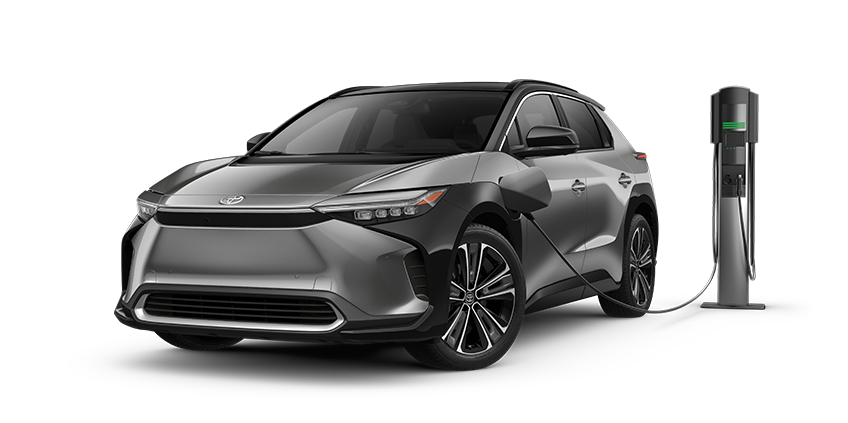
Ready to get charged up? 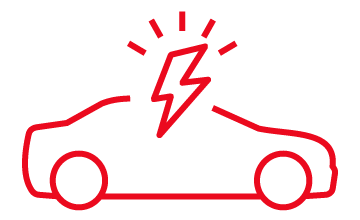
Find out what you need to know about the charging process—whether in the convenience of home or on the go. Boost your all-electric knowledge with videos that simplify electricity and charging concepts.
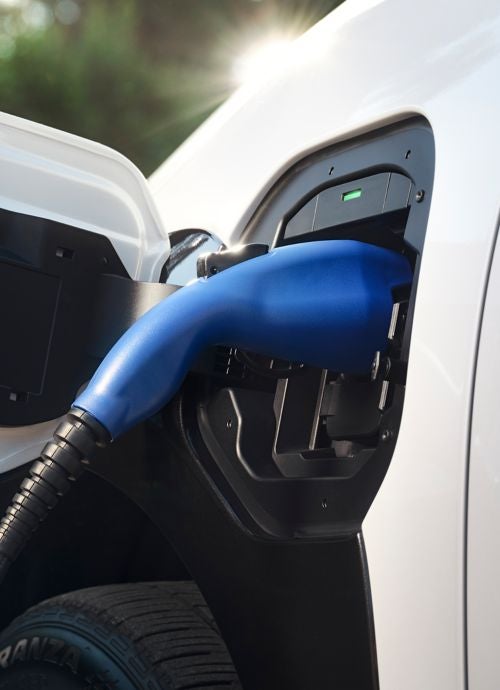
Charging time depends on the type of charger you’re using.
Level 1: 120-Volt
A great pick for drivers with short commutes. You can charge anywhere there is a common household 3-prong outlet.
Level 2: 240-Volt
The best setup for faster charging at home. Can be installed at home by a licensed electrician. ChargePoint and Qmerit offer possible charger and installation options. You’ll find Level 2 chargers at public charging stations nationwide
Level 3: DC Fast Charging
Usually can be the quickest way to charge up on the go.* Currently only available in public charging stations. Only available for bZ4X at this time.
Set up your at-home charging station.
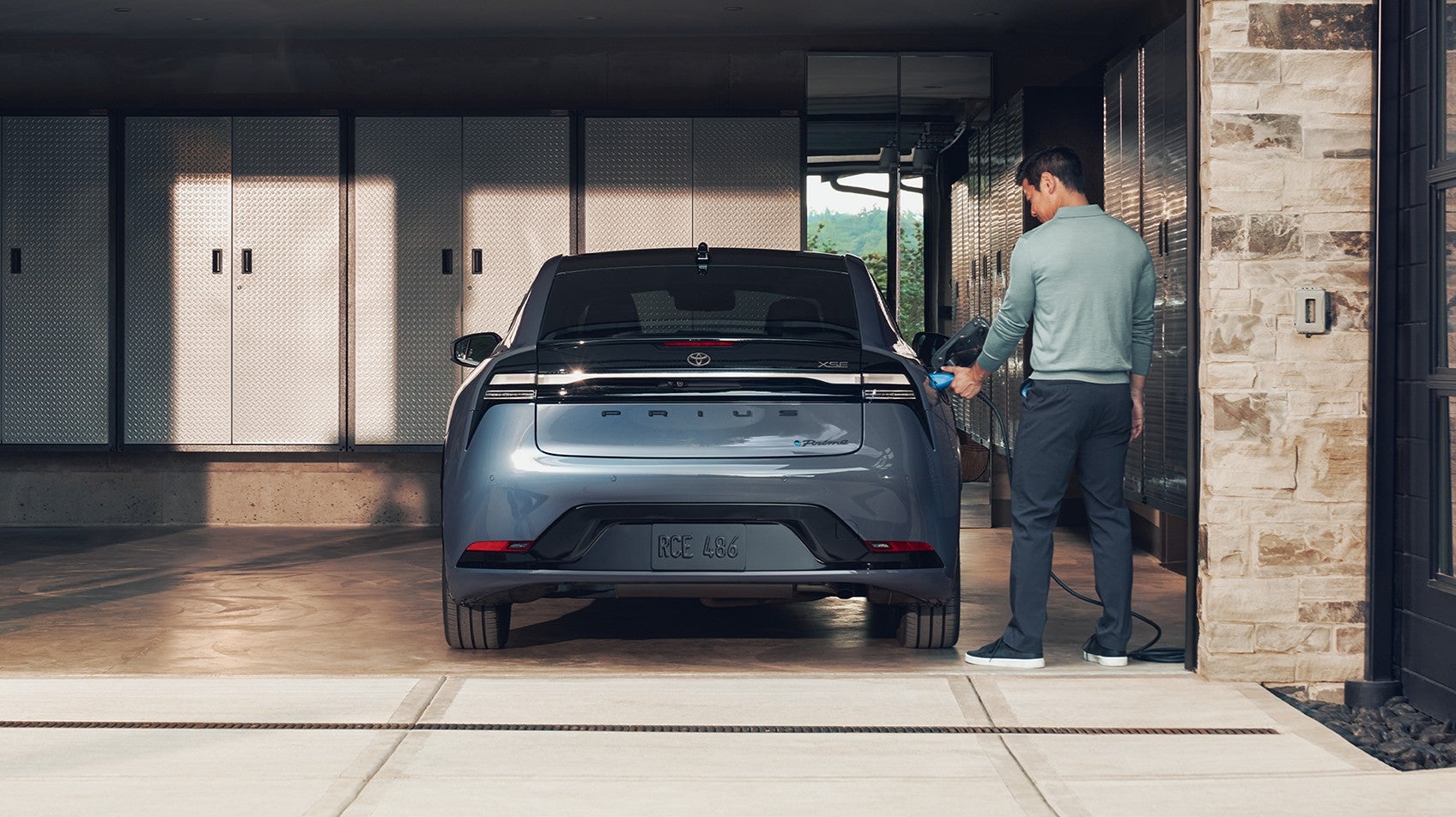
How to install a Level 2 charger.
You just need a licensed electrician to install it. Here are some equipment and installation options:
ChargePoint® Home Flex can charge your EV in the comfort of your own garage.
Explore ChargePoint.
Need help finding an electrician? Qmerit can connect you with a licensed electrician near you. Explore Qmerit.
Charging has gone public.
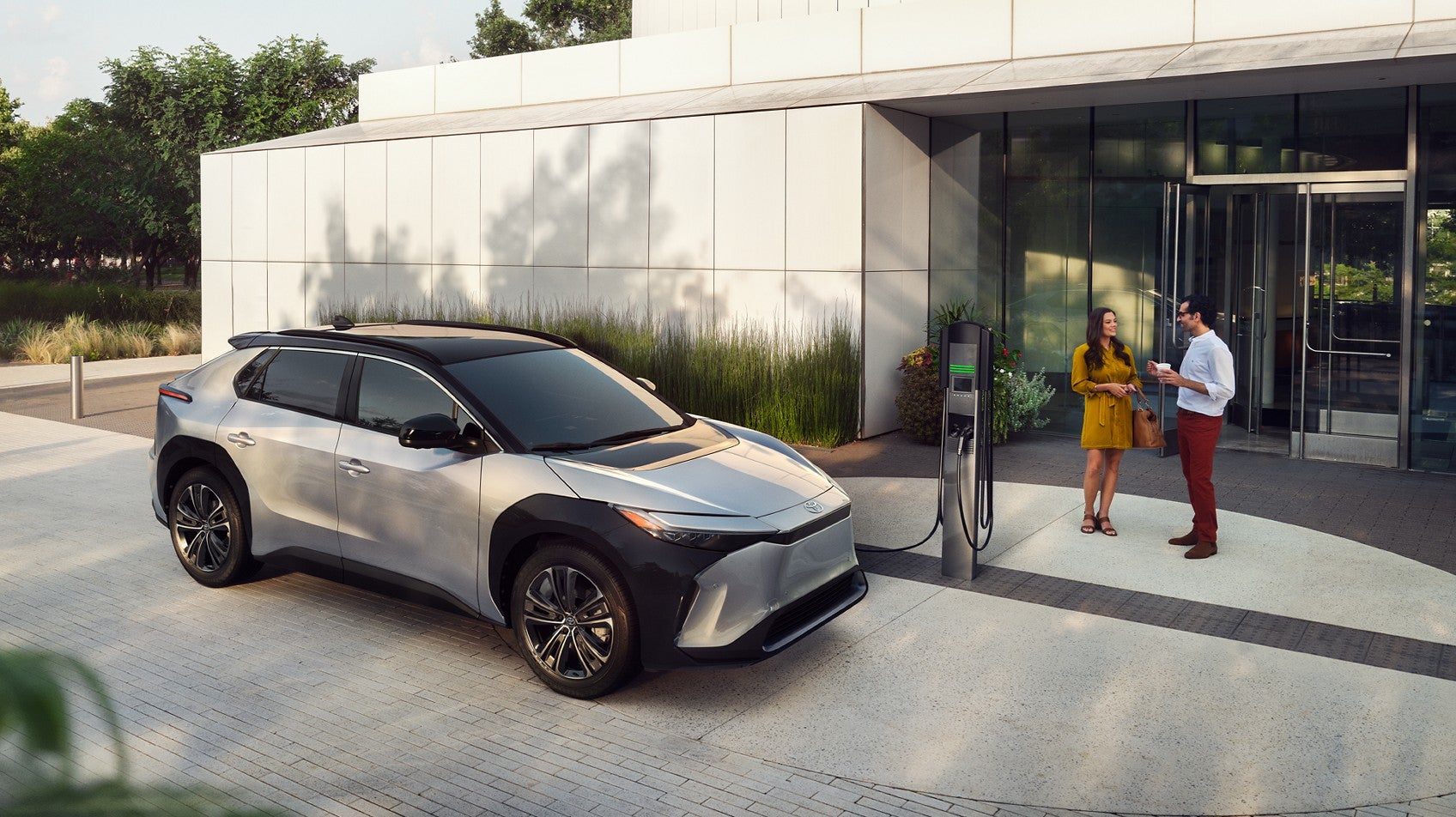
Finding a station has never been easier.
With currently over 30,000 public stations supporting Level 2 and DC Fast Charging, charging on the go is more convenient than ever. Just pull up, plug in, and charge up. And Toyota is working with ChargePoint and EVgo to help make tapping into their networks even easier.
Customers who purchase or lease a new 2023 Toyota bZ4X will get one year of unlimited complimentary charging * at all EVgo-owned and operated public charging stations nationwide. Explore EVgo.
Vehicle Benefits
Drive Experience
Feel the smooth acceleration, instant torque delivery and quiet drive—all advantages of the electric motor over an internal combustion engine.
Environmental Benefits
Reducing CO2 emissions by going fully electric is one way we can lessen our impact on the environment.
Potential Savings
All-Electric and Plug-In Hybrid vehicles can bring about potential state incentives. * Preliminary expectations include a lower cost of ownership, including overall service and maintenance costs.
FAQs
Toyota offers a wide range of hybrids and plug-in hybrids, as well as the fuel cell Mirai in California, and the all-electric bZ4X. Discover this growing lineup at toyota.com/electrified.
All-electric vehicles can be conveniently charged at home, overnight and on-demand, as well as at public charging stations when out and about. No more trips to the gas station needed.
They’re also fun to drive, thanks to the immediate torque response from the electric motors, as well as the smooth acceleration and quiet cabin.
Drivers won’t just save money by avoiding the gas pump, either—they may also be able to enjoy state incentives, as well as the potential long-term maintenance savings typical of an all-electric powertrain.
And as icing on the cake, driving an all-electric vehicle can also help the environment by reducing CO2 emissions.
Many public charging networks, like ChargePoint and EVgo, further simplify the charging process by providing app-based charger access and payment.
Level 1 is the basic charging solution. Primarily for home use, Level 1 charging cables plug directly into a standard wall outlet. They are usually included with the vehicle and are totally portable, so they can go where you and your vehicle go. This is the slowest option, however, with all-electric vehicles requiring days to reach a full charge. Because of this charging time, Level 1 is best used with plug-in hybrids.
Level 2 is a more powerful AC charging solution that is commonly found both at home and at public charging stations. Level 2 chargers are ideal for charging all-electric vehicles overnight, but for home use, the equipment must be purchased and installed by a licensed electrician.
Level 3 is also known as “DC Fast Charging,” and usually can be the quickest charging solution. * This is partially because it outputs DC electricity, which means the vehicle doesn’t need to convert incoming AC first. Level 3 is not practical for residential use and is only found at select public charging stations. Charge time will vary widely depending on outside temperature and other factors. DC Fast Charging is only available for bZ4X at this time.
This charging process can vary depending on equipment and location. Watch the how-to video on this page to learn more.
The Toyota app can also be used to find public charging locations, as well as handle charging and payment at select network stations.
You can also monitor your charging—including battery level and estimated range—through the Multi-Information Display (MID) and central touchscreen in your vehicle.
It’s important to note that any estimated vehicle range calculations shown are based on previous usage patterns and may not accurately predict the vehicle range.



